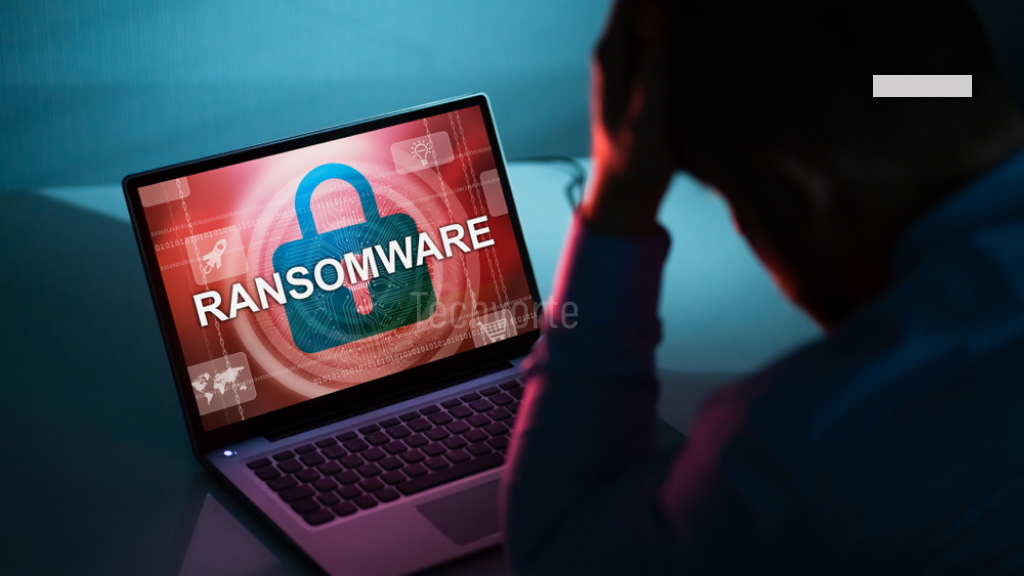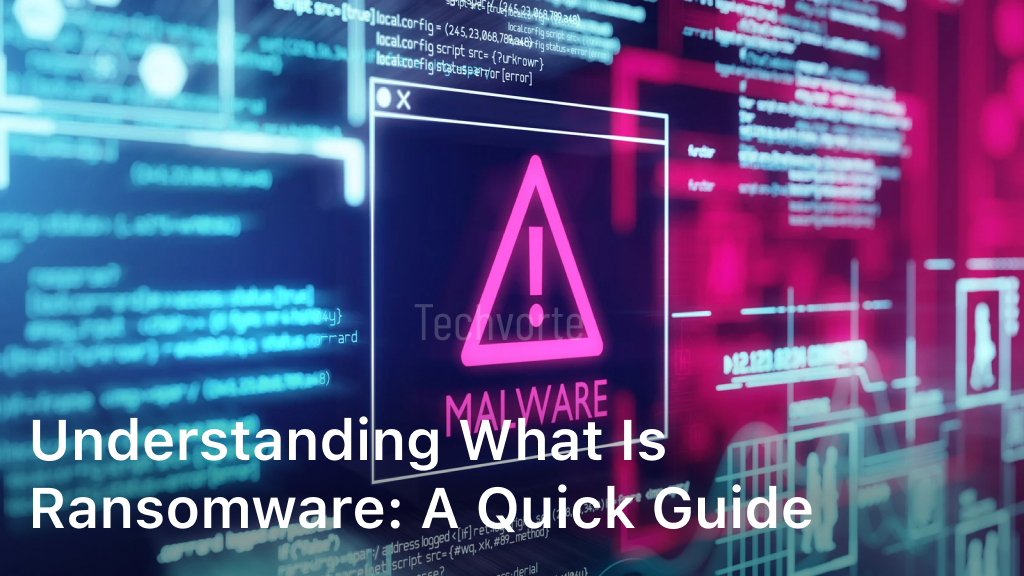The digital age has made our lives easier in many ways. But it has also brought many threats. Ransomware is one of these serious threats.
Understanding how ransomware is delivered is like knowing the moves of a hidden enemy.
It’s the first step in strengthening your defense against it.
Today, having good cybersecurity is a must. This article will explain ransomware delivery methods.
It aims to arm you with the knowledge needed to protect your online world from such dangers.
Unveiling Ransomware Delivery Methods
Ransomware is rising and poses a big risk, threatening data and money of both people and groups.
Cybercrooks have many ways to deliver their attacks.
Knowing their methods helps us fight off these threats.
Attackers trick people with normal-looking emails or downloads.
You might get an email that seems okay but has ransomware hidden inside.
Attackers also hide ransomware in software downloads, hacked websites or by using network weak spots.
They’re clever at getting past our defenses and tricking us into making mistakes.
Sometimes, ransomware comes from downloads that look safe.
Fake websites that seem real can trick you into downloading something harmful.
Ransomware also spreads through peer-to-peer networks, where there’s little oversight.
Attackers can also use software flaws to slip ransomware in unnoticed.
These hidden threats show why we always have to be careful and keep our security up to date.
Fighting ransomware starts with understanding how it’s delivered.
Teaching people more and having strong security measures are our best defense.
By learning how cybercrooks operate, we can spot ransomware attempts early. T
Common Ransomware Delivery Vectors Explored

Understanding how ransomware attacks work is key for everyone looking to protect their digital life.
It’s about knowing the main ways these threats show up.
This helps us stay ahead by using strong security steps. Let’s look at the top strategies hackers use to spread ransomware online.
Phishing Emails and Malicious Attachments
Phishing efforts are a top way hackers spread ransomware. They trick users with fake emails that seem real.
Opening these emails or clicking on bad links can install ransomware on your device.
These emails look like they’re from people or places you trust.
This makes it very important to check if emails are real before responding.
Exploiting Software Vulnerabilities
Attacking software flaws is another major method hackers use.
They look for weaknesses in popular software and systems.
Finding these flaws lets them put ransomware in those systems.
This shows why keeping your software updated is critical. Updates can protect against these attacks.
Malvertising and Compromised Websites
Malvertising is a sneaky attack that puts bad ads on good websites.
Clicking these ads can send you to websites that load ransomware onto your computer.
They look normal but have dangerous code that can give you ransomware.
This is why safe web surfing and using strong internet security tools are crucial.
How Ransomware is Delivered
The journey of a ransomware attack starts from a tricky entry to the final blow of encryption.
This path is often hidden and hits hard against our cybersecurity walls.
It shows why understanding how ransomware is delivered, its complex roll out and how it executes its payload and encrypts, is key.
Initial Infiltration Tactics
The first step is the sneak-in by cyber bad guys using clever ways to get past security.
They might use simple emails or find gaps in network security to enter.
The start of ransomware’s journey depends on being sneaky and smart, often catching victims off guard.
Escalation of Privileges and Lateral Movement
Once inside, attackers focus on digging their claws deeper into the network.
They cleverly gain more access and move sideways, targeting more devices.
Here, they exploit weaknesses or stolen logins to spread further, aiming for bigger damage.
Payload Execution and Encryption Process
The endgame of ransomware’s journey is launching the malicious code.
System files get locked up tight by strong encryption.
This last step not only seals off vital data.
It also marks the point where hackers ask for ransom, ending a well-planned ransomware attack.
Ransomware Distribution Techniques and Trends
The digital world is getting more complex, and so are the methods of cybercriminals.
They use advanced ransomware techniques that challenge our cybersecurity.
One main strategy is social engineering. It tricks people into actions that let malware in.
This approach focuses on human psychology, not just technical weaknesses.
Ransomware-as-a-Service (RaaS) is also becoming more popular.
It allows even those with little tech skills to launch attacks.
This method makes ransomware attacks more common and varied.
Cybercriminals now often target specific sectors like healthcare and finance because their data is very sensitive.
The use of cryptocurrencies has made it harder to track ransom payments.
It hides the identities of cybercriminals. Because of this, fighting ransomware is getting tougher.
The use of clever evasion methods also means ransomware can avoid detection by antivirus programs.
The way ransomware is spread and its trends show a hard reality.
Avoiding ransomware means always being alert and updating our security measures.
Knowing about ransomware is essential for everyone.
Strategies to Detect Ransomware Early and Prevent Infection
In this digital era, cyber threats change quickly.
So, it’s key to use smart ways to stop ransomware.
Knowing how to spot and prevent it early can save a lot of trouble and money.
We’ll share some tactics that businesses can use to stay safe.
Implementing Advanced Threat Detection Solutions
Just having antivirus isn’t enough these days.
Companies need to use better threat detection tools.
These tools look at network activity and check for odd patterns that might mean a ransomware attack is happening.
They can alert you right away, helping to stop the threat early.
Using this tech is a big part of keeping your data safe from ransomware.
Conducting Regular Security Audits and Employee Training
To keep ransomware out, it’s also crucial to check your security and teach your team.
Security checks find weak spots that ransomware could break through.
At the same time, teaching staff about scams and dangerous links helps them stay alert.
This two-sided approach strengthens your defense from both tech and people angles.
Establishing Robust Data Backup Protocols
Even with good defense, it’s important to be ready if things go wrong.
Setting up strong backup systems is a must.
Backups need to be done often and saved in many places, like offline, to protect against ransomware.
If ransomware locks your data, having backups keeps your business running without paying ransoms.
Conclusion
Ransomware attacks are huge threats in our digital world.
They bring big problems to both people and companies.
Understanding how these attacks happen helps us build strong defenses.
Cyber criminals use tricky emails and software weaknesses to attack.
To fight back, prevention is key. Using advanced systems to detect threats is crucial.
So is having regular security checks and teaching employees about these dangers.
Also, always back up your data. These steps lower the chance of damage from attacks.
It’s vital to be proactive to stay cyber-strong in today’s world.
Fighting ransomware means always being ready and aware.
Stay up to date on how these attacks happen. Also, make your security better over time.
Protecting our digital life is important. Keeping ahead of ransomware is essential for our digital future’s safety.
FAQ
How is ransomware delivered?
Ransomware can get into systems in many ways. These include phishing emails, harmful attachments, and cracks in software. It can also come from bad ads and unsafe websites. Attackers use these methods to sneak in and lock down systems.
What are the common ransomware delivery vectors?
Common ways ransomware enters include phishing emails with bad links or files. It also sneaks in through flaws in widely used software or systems. Even malicious ads and rigged websites can spread ransomware.
What are the stages of ransomware delivery?
The first step in ransomware delivery is breaking into the system. This can be through hacking or tricking someone into giving access. Next, attackers move around the network to find more to take over. Finally, they lock files with ransomware, making them unreadable.
What are the strategies to detect ransomware early and prevent infection?
To catch ransomware early, use threat detection tech that spots and stops it. Regularly check your security measures. Also, train employees to notice dangers. Having good data backups is crucial. It can lessen the damage if attacks happen.





